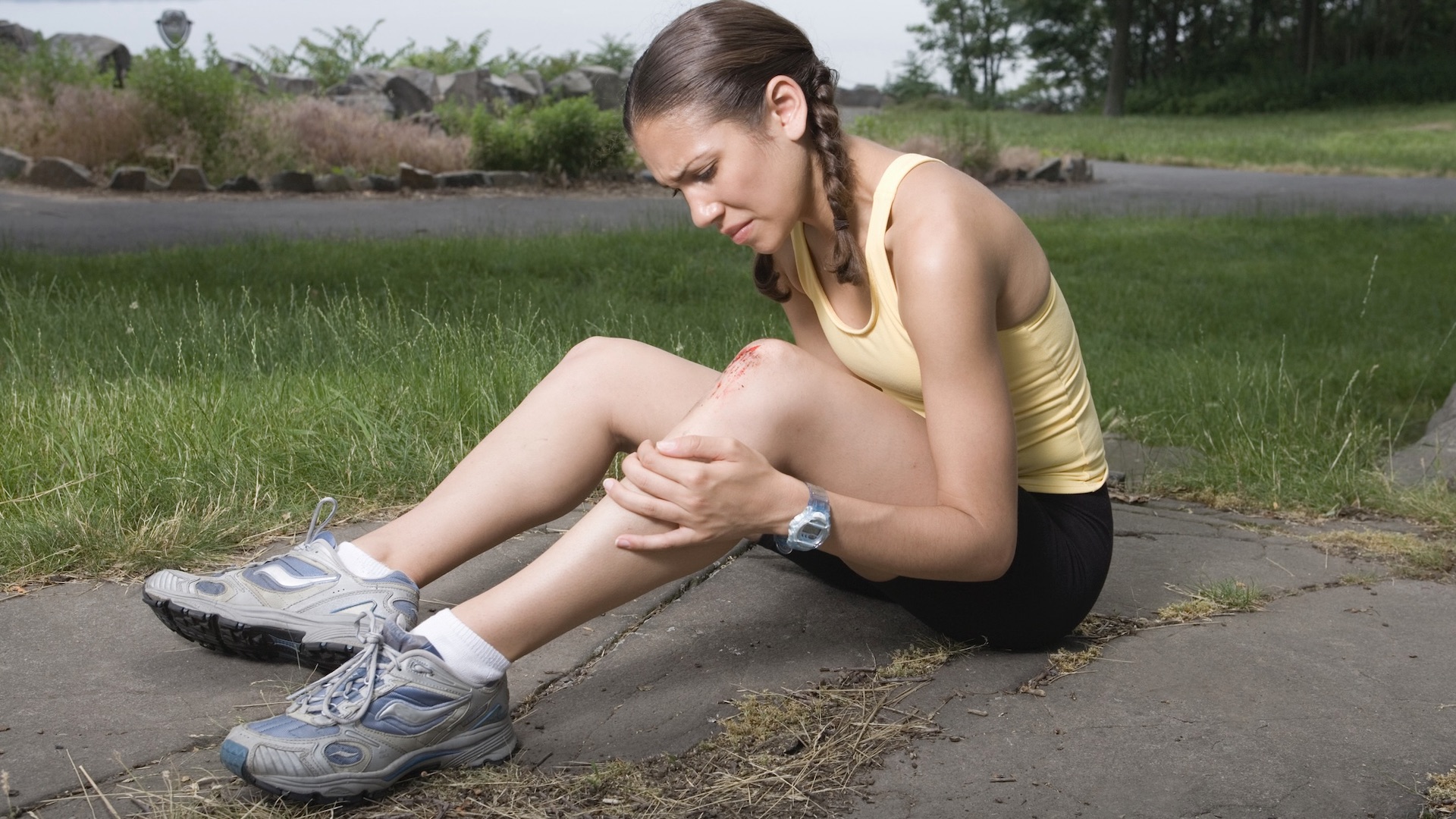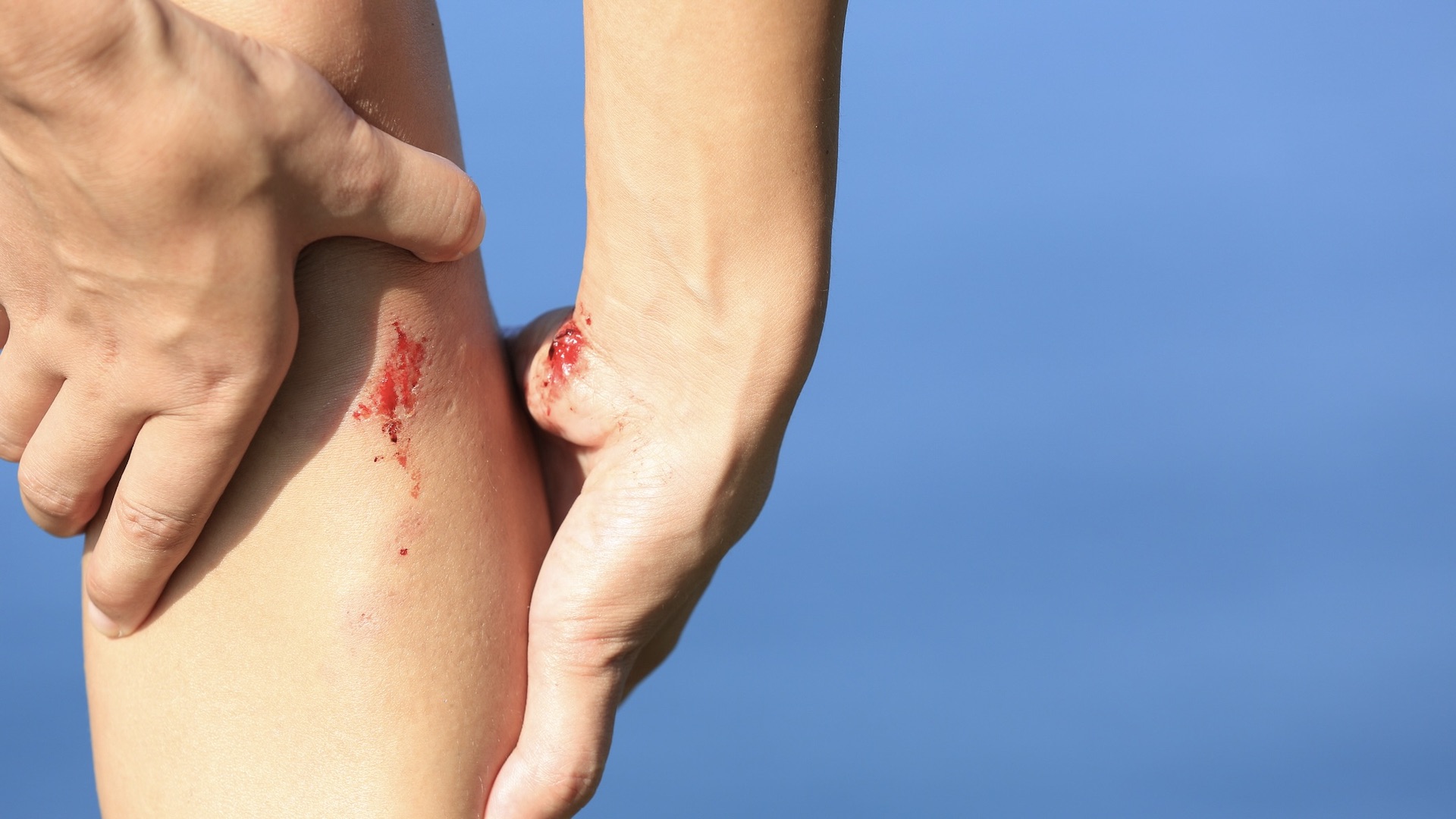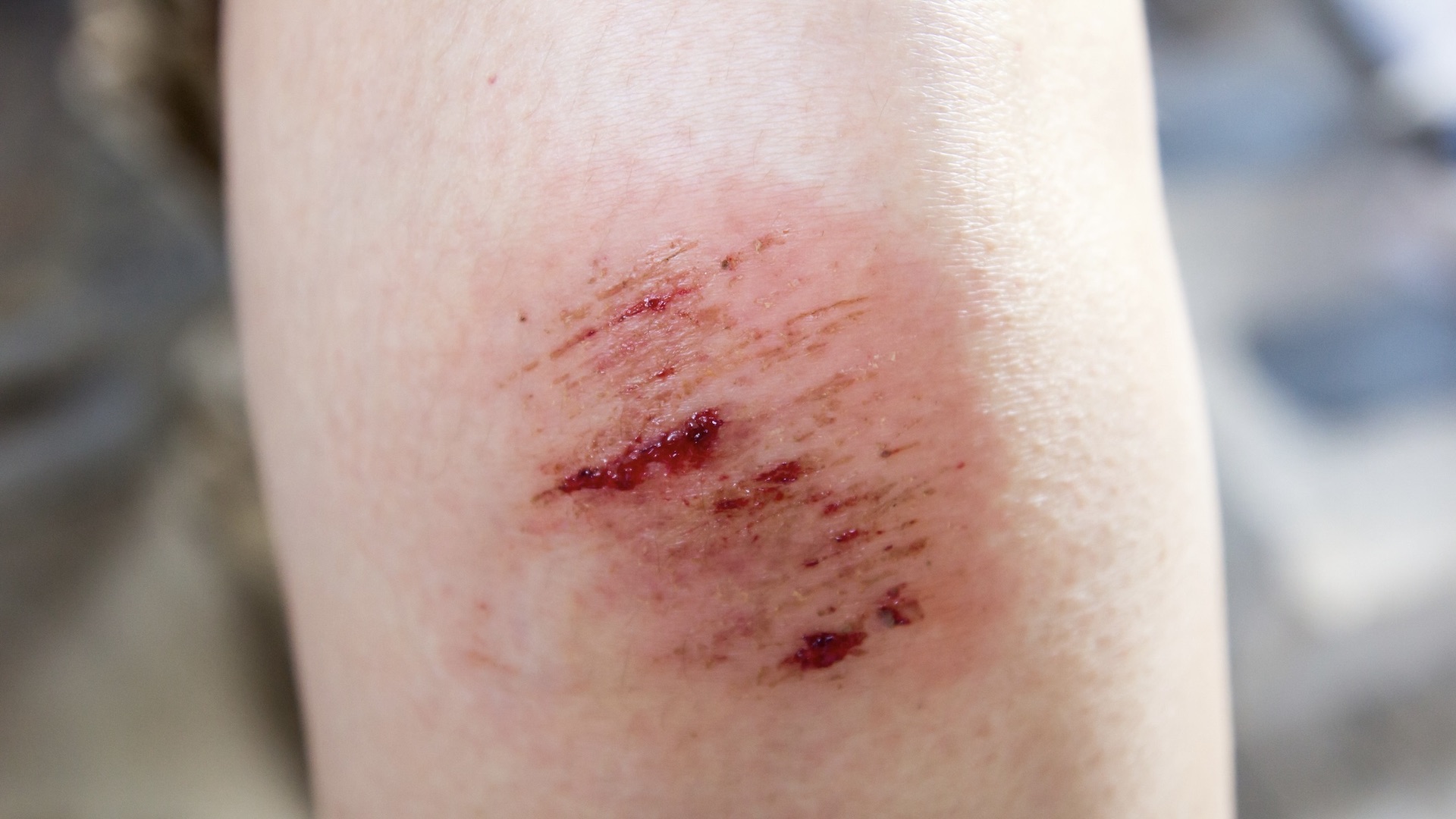
Running offers a wide range of health benefits, but it also comes with a risk of different injuries, including the potential for cuts and scrapes if you happen to trip over. Whether you're a seasoned runner or just starting out, knowing how to treat minor injuries during a run is key for staying safe and healthy.
It's always sensible to carry a basic first aid kit when you're running, and you can easily put together one that's small enough to fit in a running backpack or even tuck into a hydration pack. Our guide to running first aid kits will help you get started.
Once you've got your kit, you need to know how to use it, so we've spoken to several experts for their advice on treating cuts and grazes during runs, whether you're the one who's taken a tumble or it's someone else in your group.
Stop and assess the injury
You should not delay looking at n injury if you fall or scrape yourself while running. IIt’s a good idea to attend to it as soon as you can, says Dr Luke Powles, an associate clinical director at Bupa Health Clinics. You should stop and take a look at how deep, or not, the injury is.
He adds: “If you know that you have a cut or a scrape, you should stop running and assess the severity of the injury. Try to gauge how deep the cut is and decide whether it requires immediate medical attention.
“If the cut is minor and you have clean drinking water to hand, you can use it to remove any blood, dirt or debris that may have entered the wound.
“Then, if it’s only a minor cut or scratch, there is no need to cover it unless it’s in a place where clothing may rub against it. It is deeper cuts that will require a dressing or a plaster.”

Take the right medical action
If the cut continues to bleed you should take further action. Dr Powles says: “Cuts on your head or hands may bleed more due to the number of blood vessels in those areas.
"If you have a clean cloth or gauze, apply gentle pressure for 10 minutes to control the bleeding. Try elevating your affected area to reduce blood flow while keeping pressure on the wound to avoid re-bleeding.”
Carolina Goncalves, superintendent pharmacist at Pharmica, also warns: “In some instances, you may see something stuck in the wound after cleaning it with water, such as a rock or a piece of wood. If this is the case, do not attempt to take the object out or press down on the area around the wound.”
She makes an important point that if the wound has something stuck in it, or if it is a substantial cut that may require stitches, it’s vital to call for help immediately if possible.
She says: “For this purpose, I recommend carrying your phone with you on your run, either in a small running backpack or an arm attachment that holds the phone. Alternatively, if you own one, you can use a smartwatch that can make calls.”
Take a first aid kit
If you are heading out for a longer run and somewhere on trails or more remote, medics suggest you carry a simple first aid kit. As a basic kit list, you might include alcohol-free wipes, waterproof plasters, sterile dressing pads and also a list of emergency phone numbers.
Goncalves also suggests pocket-sized first aid pouch with clean cotton wool balls, and a small plastic bottle of iodine whenever you go for a run to disinfect wounds should you cut yourself while running.
She says: “Iodine is very useful. Pour the iodine on to a cotton ball and gently wipe the wound and the surrounding area to remove pathogens that may cause an infection. This may hurt, but it is a vital step because iodine penetrates the cell walls of bacteria, viruses and fungi, disrupting the protein and nucleic acid structure to eliminate them from the wound and significantly reducing the risk of infection."

Look after the injury
Once you’re home and can assess the injury thoroughly, Dr Powles offers further advice on care of the cut or scrape. He says: “You need to check how deep the wound is, whether there is any dirt in it and whether it’s still bleeding or weeping.
“If it all looks healthy and clean, apply a fresh dressing to the wound and change this once daily or whenever the covering becomes damaged or wet.
“Keeping wounds clean is very important. If you leave any mud or dirt in a wound, it’s less likely to heal by itself. This is because mud can get trapped inside the wound and cause infection.
“If left untreated, infected wounds may need a tetanus booster. They can lead to bacterial infections and, in the worst of cases, sepsis.
“Keep a close eye on the cut and check for infection inside or on the skin surrounding the wound, such as the skin changing colour or temperature, weeping or swelling. If you start to experience any of these symptoms, you should seek professional help.”







